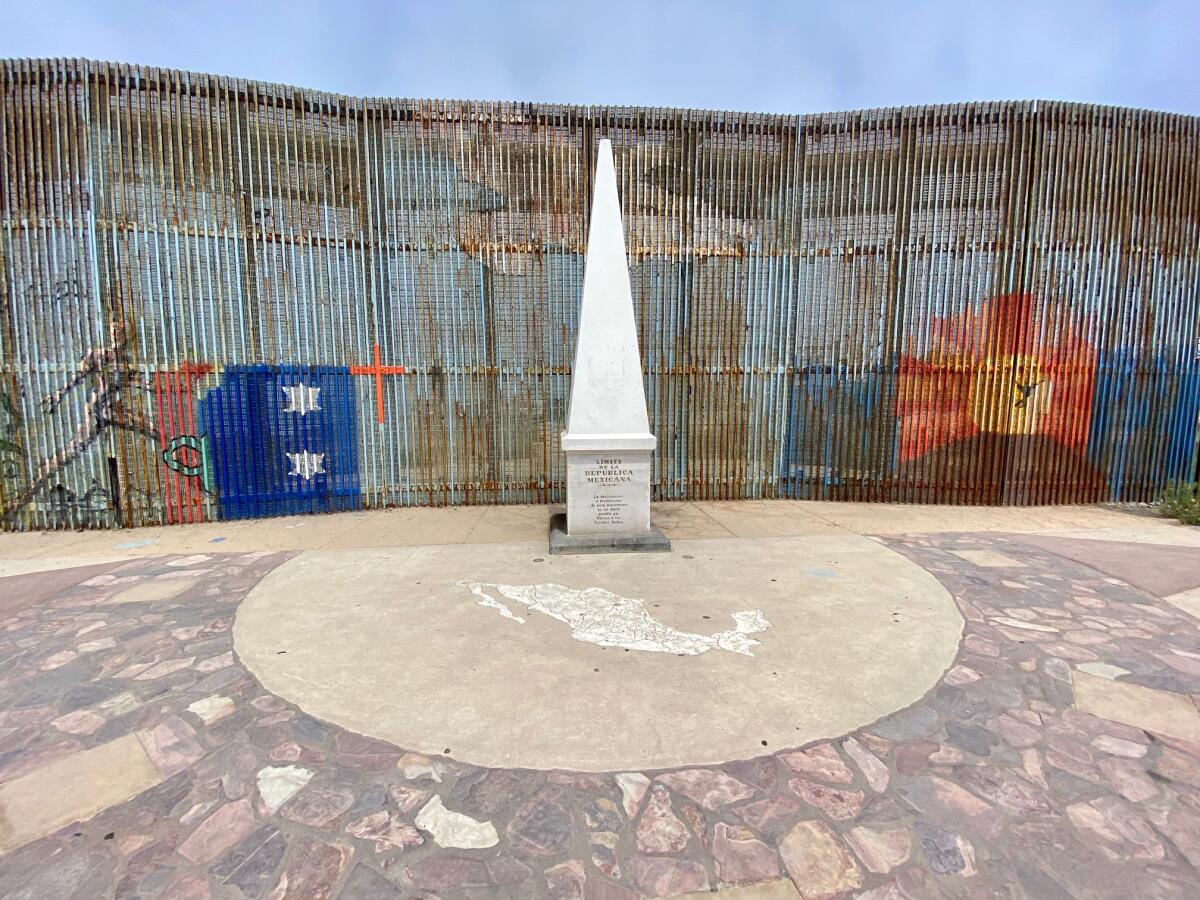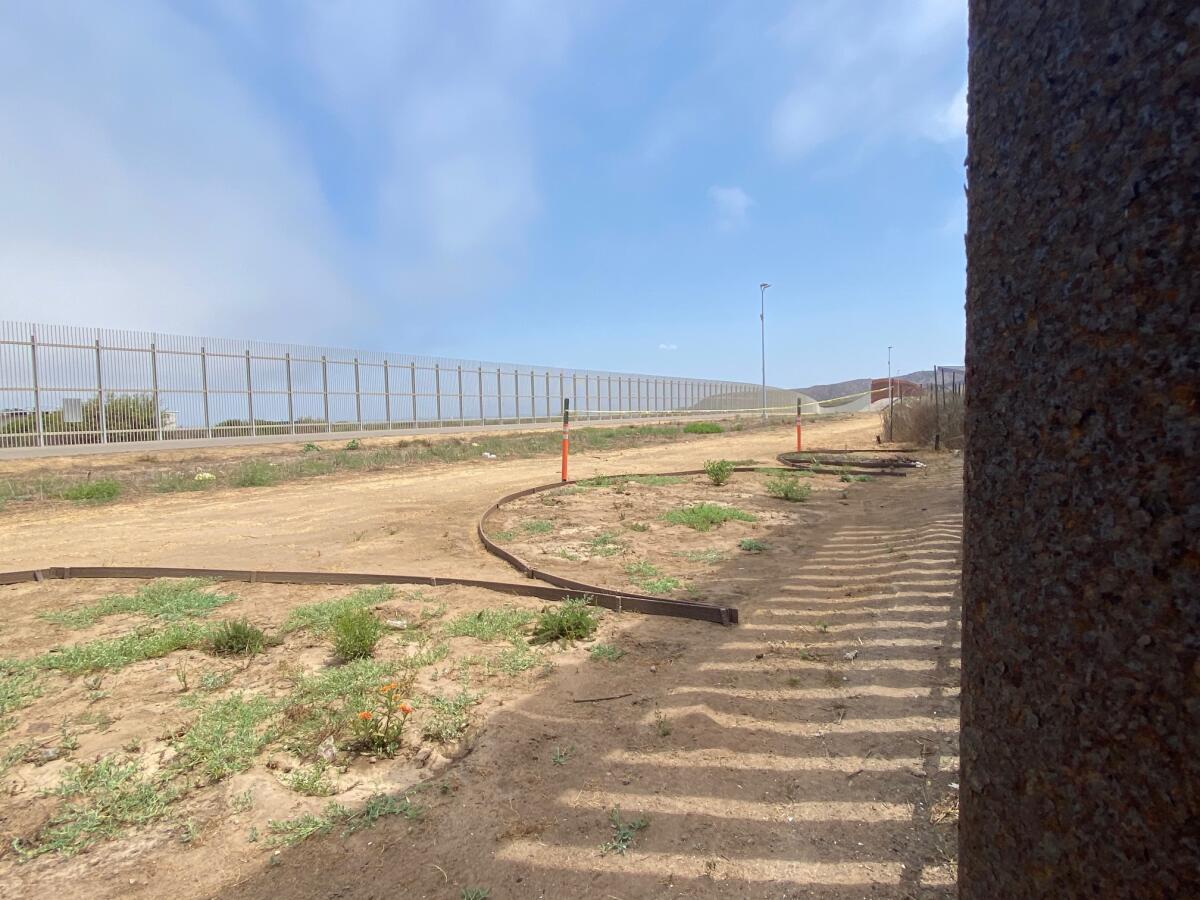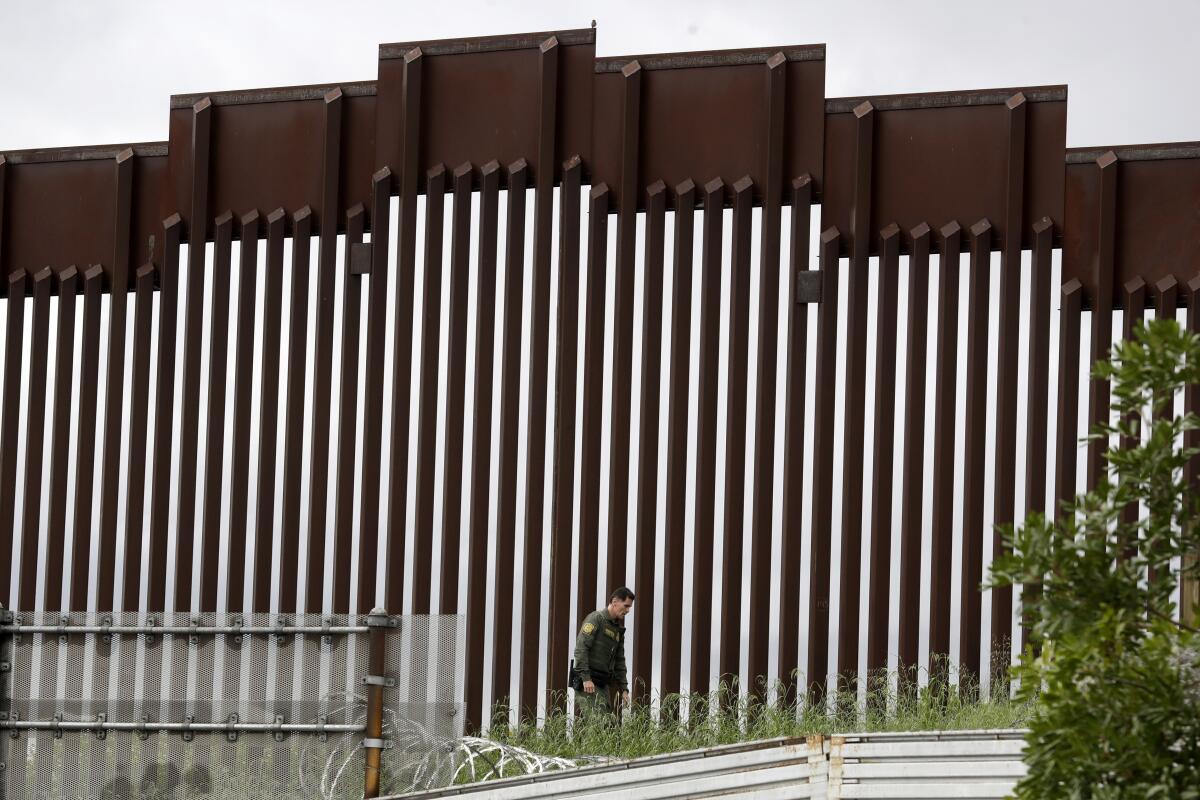Friendship Park at the U.S.-Mexico border will soon change and here’s why

- Share via
The Friendship Park and its surroundings will soon look different as the border wall replacement project advances to the west.
The rusty bars, embellished on the Mexican side with the work of many artists, will be replaced with the same border fence that has been installed for the last two years along the U.S.-Mexico border.
One of the biggest concerns of local activists is what will happen to the binational garden that was planted more than 10 years ago on both sides of the park, especially since the Border Patrol unintentionally destroyed it on the U.S. side earlier this year. At the time, the Border Patrol said it was a mistake, and later apologized and gave permission for people to replant it.
A Border Patrol spokeswoman confirmed that plants on the U.S. side will be required to be moved temporarily while the new border fence is being installed. She assured that all precautions will be taken to not kill them.
Daniel Watman, founder of the binational garden, said his group has already been notified, and he will try to transplant them himself.
“What they are promising us is to give us time to save the plants, but not many will survive,” Watman said. “On the U.S. side, the chances of survival are low because they are new, so every time they are transplanted, there is a high risk that they will die.”
Plants on the U.S. side were planted earlier this year by volunteers, including Border Patrol agents.

It is still unknown when the construction of the border wall will continue, specifically in the area of Friendship Park, since it was generally interrupted by the COVID-19 pandemic.
As part of the border wall replacement project, 34 miles of primary and secondary fence between Tijuana and San Diego have been replaced. Thirteen miles are still under construction, and the last three miles that correspond to the Friendship Park area are in the planning stage, said a Border Patrol spokeswoman.
The new fence is higher and has features that make it more difficult to climb.

The binational garden covers territory of both countries. It was first planted in March 2007 to build friendships through the wall and promote the native flora, organizers said.
Pedro Ríos, director of the American Friends Service Committee and also part of the Friends of Friendship Park Coalition, said he believes there will be backlash from the community if the garden is not returned to its original state. “Communities on both sides of the border look for these spaces where they can create friendships and relationships between neighbors.”
The Border Patrol reiterated that specialists will supervise the moving of plants.
In 2021, Friendship Park will celebrate the 50th anniversary of its founding by then First Lady Pat Nixon as a symbol of friendship between the two countries.
This is not the first time it has been remodeled. For many years the park’s design allowed people to touch each other while standing on both side of the border. Today, that is impossible.
Over time and despite stricter border enforcement measures, the park still managed to establish itself as a space where families separated by immigration laws can meet, even if they are divided by a fence that limits contact to only the tips of their fingers. Sometimes families travel from Mexican states or the U.S. to spend a few hours at least near their loved ones.
This site, inside the Border Field State Park on the U.S. side, has been closed due to COVID-19.
The Border Patrol said that the park’s dynamic will not change with the renewed border wall.
Artists from around the world have used the border wall as a canvas to express themselves and to leave a message of solidarity to migrants.
One of them is Enrique Chiu, who started in 2016 the Brotherhood Mural project, which other artists, community members and even celebrities have joined.
He acknowledges that art around the park would be temporary.
“We knew it was ephemeral,” said the artist, who recalled that the Border Patrol had replaced the old fence on Tijuana’s Avenida Internacional where they once painted. “Since then we knew. It’s their wall, we only borrowed it to paint on the Mexican side.”
Once the new wall is back up, artists will paint it again, he said.
In the midst of the federal government’s border wall plans, the Friends of Friendship Park group resumed a campaign to promote the concept of a truly binational park with more access to families on both sides of the border.
The conceptual design by San Diego architect James Brown imagines an expansive vision for the park. The design is scheduled to be unveiled in 2021.
“By fulfilling the original promise of International Friendship Park, we can launch a new era of international peace and friendship,” Brown said in a statement.
Mendoza writes for the San Diego Union-Tribune.
More to Read
Sign up for Essential California
The most important California stories and recommendations in your inbox every morning.
You may occasionally receive promotional content from the Los Angeles Times.











